VXLAN EVPN TE multi-site egress load balancing
A VXLAN EVPN TE - Multi-Site egress load balancing mechanism is a networking technology that
-
facilitates traffic steering between data center sites
-
enables load balancing for data transmitted across different fabrics over multi-site links, and
-
operates across an IP-based underlay network (Inter-site Network, or ISN) to provide IP traffic engineering for overlay-encapsulated traffic.
Topology of VXLAN EVPN TE multi-site egress load balancing
VXLAN EVPN TE multi-site egress load balancing enhances the use of inter-data center links. In this topology, three VXLAN EVPN fabrics in the same multi-site domain connect through a local tier of Border Gateway devices (BGWs) at remote sites.
-
Various BGW types are supported, including Anycast BGWs, vPC BGWs, and Border Gateway Spine devices.
-
Fabrics can interconnect through direct BGW-to-BGW links or through a generic core infrastructure (ISN).
-
Typically, the paths designated in orange serve as the best path or multipath for communication between endpoints at site-1 and site-2.
-
Enabling multi-site egress load balancing makes additional traffic distribution paths available beyond the best path, such as routing through an intermediary site (site-3) or generic core infrastructure, as part of unequal ECMP (uECMP) or weighted uECMP (wuECMP).


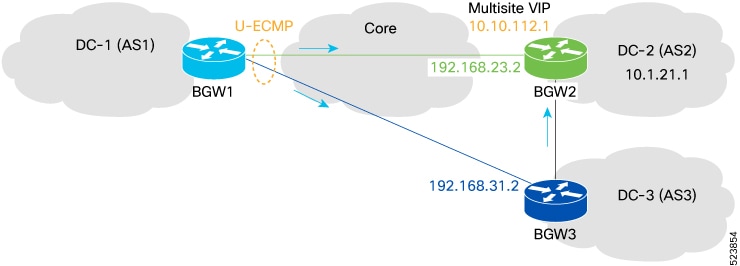
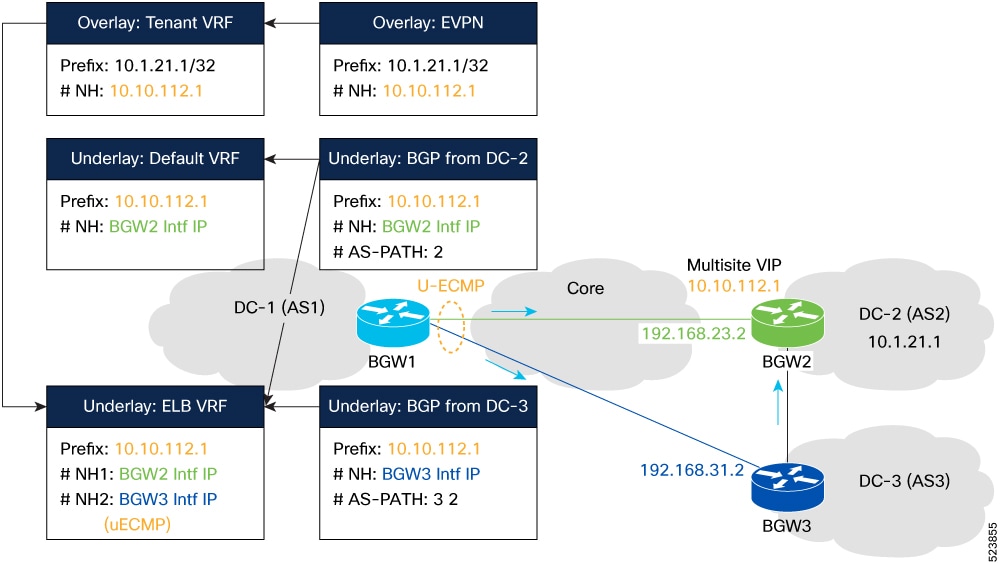
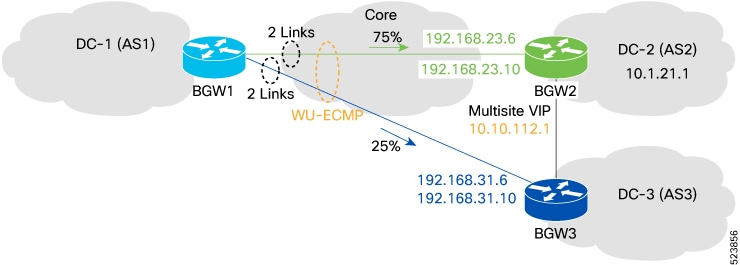
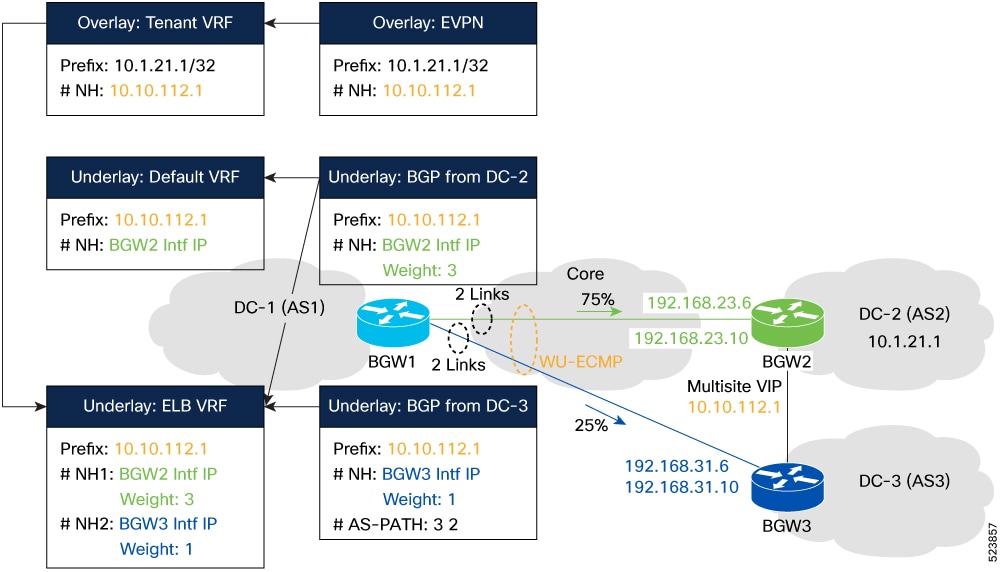


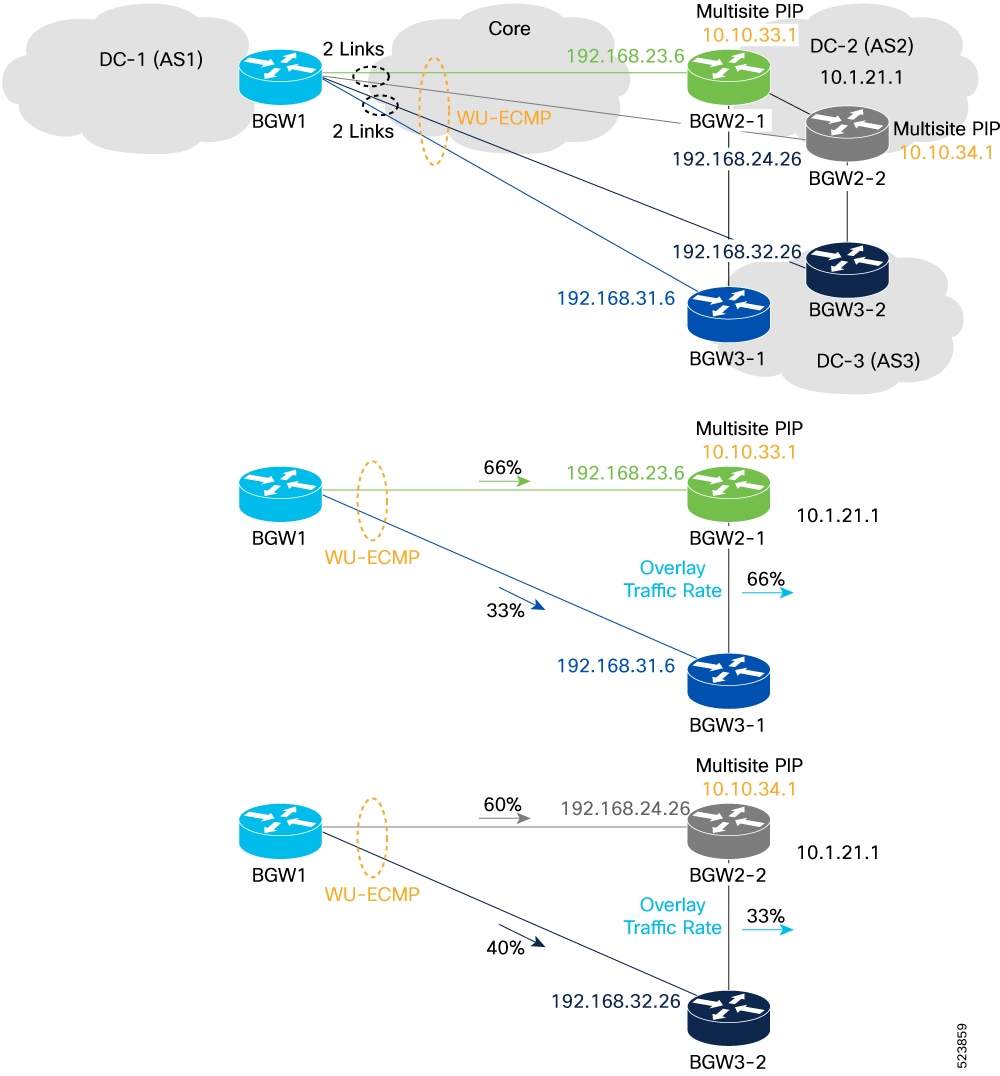
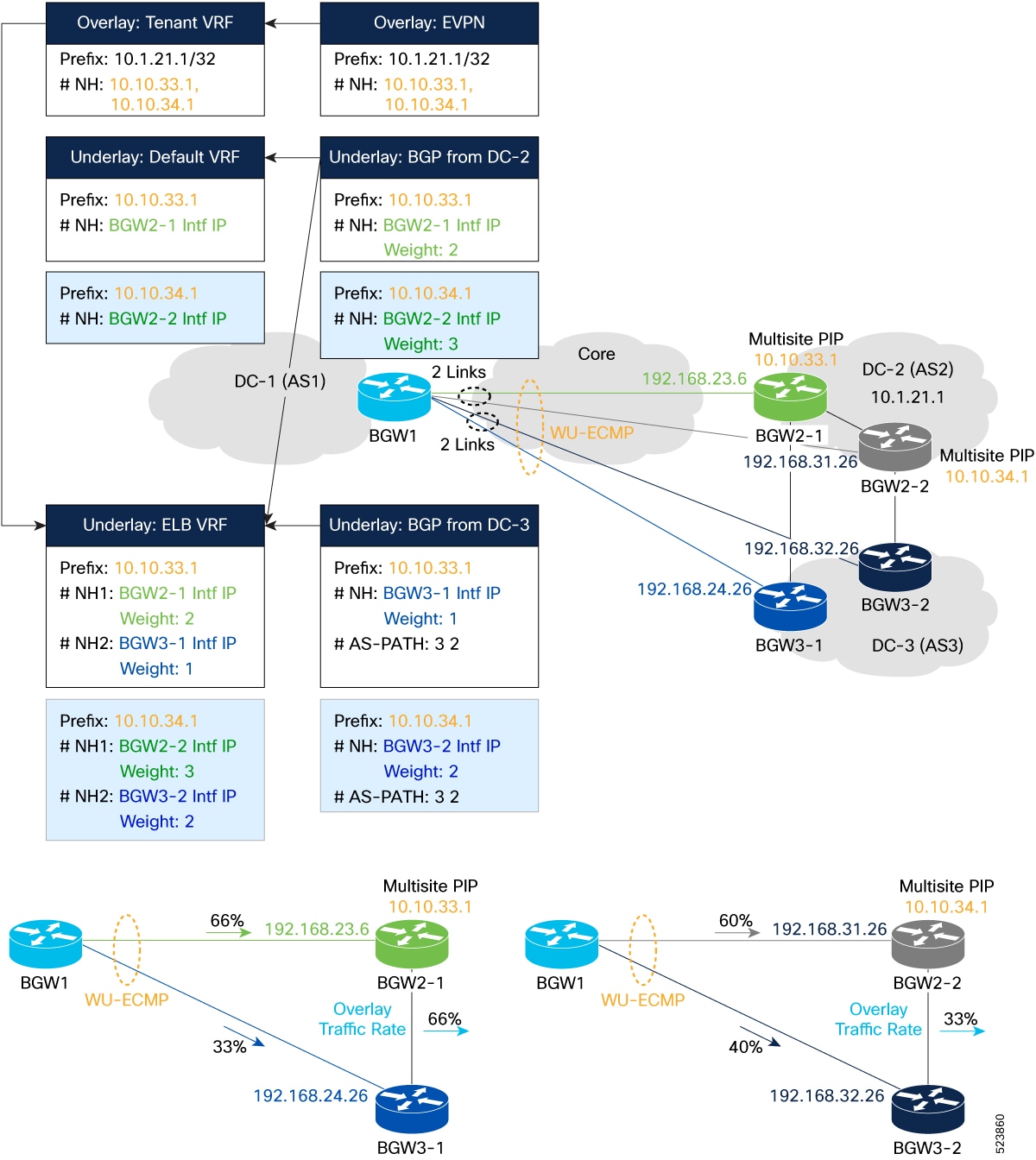
 Feedback
Feedback